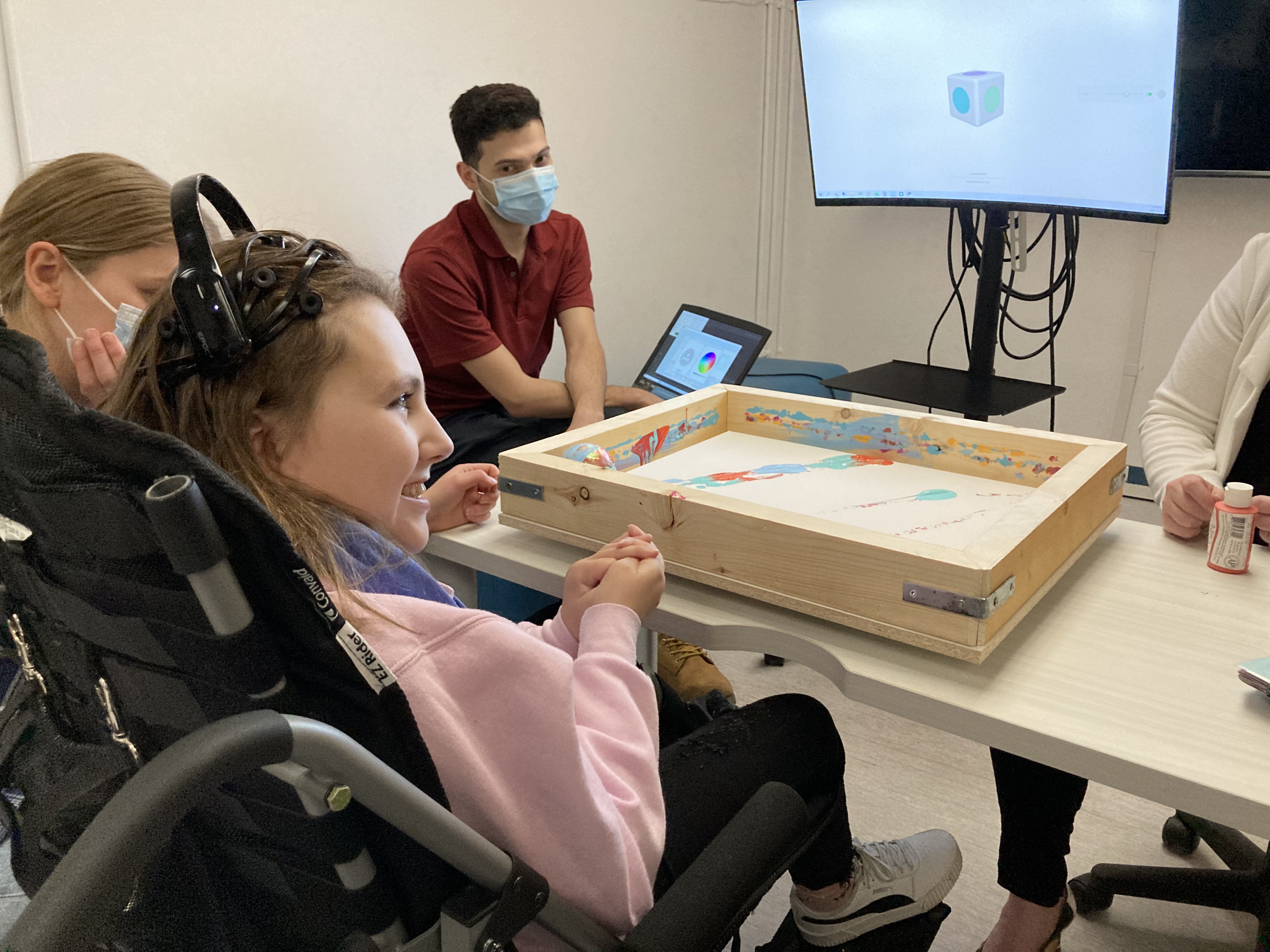New U of A engineering research chair seeks advances in brain-computer interfaces for children with mobility, communication challenges
Helen Metella - 19 June 2024

Children like Olivia Terry could have new possibilities to interact with their world, thanks to a new engineering research chair at the U of A who aims to advance technology that allows people to control devices with their thoughts. (Photo courtesy of Stephen Terry)
It would be life-altering for 15-year-old Olivia Terry and her family if she could communicate through more than just her eye movements, so her parents are thrilled that a new engineering research chair at the University of Alberta will seek solutions for children who have severe mobility and communication challenges.
Olivia has Rett syndrome, a genetic neurological condition that caused her to lose her motor skills and speech beginning at age four.
“With Rett syndrome, their eyes tell the tale,” says her father, Stephen Terry.
“As her parents, we can tell when she’s upset or happy. The problem becomes figuring out what it is that’s bothering her. Is her toe sore, is she sick or does she need a drink of water?”
The new Glenrose Rehabilitation Hospital-University of Alberta Engineering Research Chair in Neurorehabilitation has been established to fund five years of interdisciplinary research delving deeper into an existing technology called brain-computer interface (BCI).
BCI captures the electrical activity created in the brain by specific thoughts, analyzes them with assistance from artificial intelligence and converts those electrical impulses into commands. BCI technology is used to restore function to people with cerebral palsy and spinal cord injury, allowing them to operate external devices like wheelchairs or computers. It’s also increasingly helping neurodiverse children.
Using currently available BCI technology at the Glenrose — a head cap with sensors connected to a robot by Bluetooth — Olivia can move her wheelchair and direct a roller ball to paint pictures during supervised sessions.
But what if more sophisticated BCI technology could read and transmit her more detailed thoughts? At home right now, Olivia communicates with her family through an eye-gaze technology connected to a tablet. She uses her eyes to choose from a set of pre-programmed messages to express herself.
Hossein Rouhani, a biomedical engineer and associate professor in the Department of Mechanical Engineering, will hold the chair position. His team’s focus will be on making advances in BCI technology that can specifically help neurodiverse children — a challenge that is “10 times more difficult” than assisting adults, says Rouhani.
He says that while each person has distinct neurological functions that must be accounted for, children additionally need solutions that account for their ongoing physical and mental development. That extra level of difficulty has meant that extensive BCI research with children is sparse, Rouhani says.
Successfully adapting technologies created for adults to use with children requires something called user-centred design, Rouhani says.
“We have to constantly work with the children, their parents and their therapists, receiving continuous feedback from them to make sure the technology is usable to them, to their satisfaction.”
Working with the Glenrose is ideal, says Rouhani, because that user-centred approach is one of the key strengths of the Glenrose’s Imagination Centre. Its mission is to help individuals with communication and movement challenges achieve greater independence and quality of life, and it’s where Rouhani is developing sensor technologies for BCI control of power wheelchairs.
“We look forward to seeing the discoveries and possibilities that arise from this partnership that will benefit not just Glenrose patients, but others facing some of the most complex neurological conditions,” says Mark Korthuis, president and CEO of the Glenrose Hospital Foundation.
While BCIs are a core focus of Rouhani’s work, he is also interested in integrating them with other advanced technologies, such as wearable devices. “I will be able to develop exoskeletons that can grow with the users, size-wise and abilities-wise,” he notes.
For Stephen Terry, the new chair’s future research presents lofty possibilities.
If researchers can develop BCI technology that accurately transmits Olivia’s thoughts, “she may be able to find employment one day,” says Terry.
“Right now, a typical employment is not in the cards for her. But if it is able to read her mind, maybe even journalism wouldn’t be out of the question.”